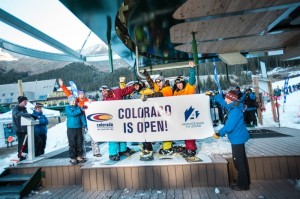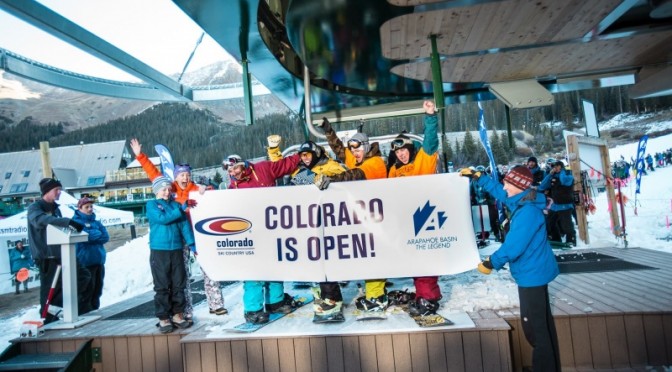Denver, CO – A record-breaking summer for both occupancy and revenue among western mountain resorts is concluding and the positive momentum is carrying into the winter booking season according to DestiMetrics, a Denver-based organization that tracks mountain lodging bookings at 19 western mountain resorts in six states.
As of Sept. 30, winter bookings for November through March are showing an aggregated 7.4 percent gain in occupancy for the upcoming ski and snowboard season compared to the same time last year with increases appearing in the first five months of the ski season that data is available. Aggregated revenue is also strong with a 15.5 percent increase for the first five months of the 2014-15 season.
These predictions come after a strong summer season for Western mountain resorts. Aggregated occupancy for May through October among resorts that participate in the survey was up 5.4 percent compared to the same time last year with only the month of September showing a slight decline of 1.1 percent compared to September 2013. Revenues for the six-month period are now up 10.6 percent compared to last summer with only October showing a decline in overall revenues—down 2.8 percent compared to October 2013. This is a bonafide all-time record for both occupancy and revenue.

“With the first Colorado resort opening (Arapahoe Basin, on Oct. 17), a strong start will likely further promote the robust advanced booking pace that is already being demonstrated in early season booking patterns,” observes Ralf Garrison, director of DestiMetrics. “But when it is this early in the season, the role of Mother Nature and the recent volatility of economic and global conditions give rise to a note of caution.”
The Briefing also analyzes the data from a regional perspective with results for the Rocky Mountain resorts in Colorado, Utah and Wyoming compared to the Far West resorts in California, Nevada and Oregon. Snow conditions from last season or “snow equity,” a phrase coined by Garrison, is having a distinctly different impact on bookings for the two regions thus far. While the Rocky Mountain resorts are tracking 8.9 percent higher in occupancy with a 16.4 percent increase in overall revenues. The Far West resorts are experiencing the opposite effect. As of Sept. 30, their aggregated occupancy was down 6.5 percent and related revenues are down 7.7 percent.
Economic variables are also closely monitored by DestiMetrics and analyzed with an eye to how trends and indicators may impact the destination mountain travel industry.
In the October Mountain Market Briefing distributed to DestiMetrics’ subscribers, the economic assessment carried a more cautionary note than in recent months. Reporting that as of Sept. 30, the Dow Jones Industrial Average (DJIA) declined a scant 0.3 percent, it did mark the second decline in the past three months. More significantly, the Briefing included an update of the DJIA in recent weeks because of the recent volatility in the stock market and a sharp drop of more than 900 points.
“The recent dramatic drop in the financial markets may simply be the start of a long overdue correction in an overvalued market,” explains Tom Foley, director of operations for DestiMetrics. “However, we have a lot of national and international variables that are also impacting investors with the European market tilting toward a fresh recession overseas while the Ebola crisis in West Africa has now appeared outside of the region. When we include an increased U.S. and international commitment in the Middle East conflict it is not surprising that markets are waffling about the future,” he adds.
The sharp decline in the Consumer Confidence Index (CCI) during September was also cited as cause for concern. The 7.9 percent decline in September took the Index below 90 points for the first time since June and was the first decline recorded since April. One optimistic indicator was the two basis points decline in the Unemployment Rate to 5.9 percent to reach its lowest level since April 2008 as employers’ added 248,000 new jobs.
“Because of the strong job creation in September, we would normally expect consumer confidence to rebound next month but the strongly negative financial market conditions could stifle a rebound and may well stall job creation,” Foley cautioned.
The Briefing concluded that while skiers and riders are loyal and committed mountain travelers even in tough economic times, weather and global geopolitics will require close monitoring this season.
“At this point, we’re seeing skiers and riders taking up right where they left off last year because of snow equity,” says Garrison. While this is working to the benefit of destinations in the Rockies, it is posing a challenge to Far West mountain resorts where negative snow equity is dragging booking pace. However, a major break in the drought or a few good early season snowstorms would be a powerful antidote for what ails them.”

